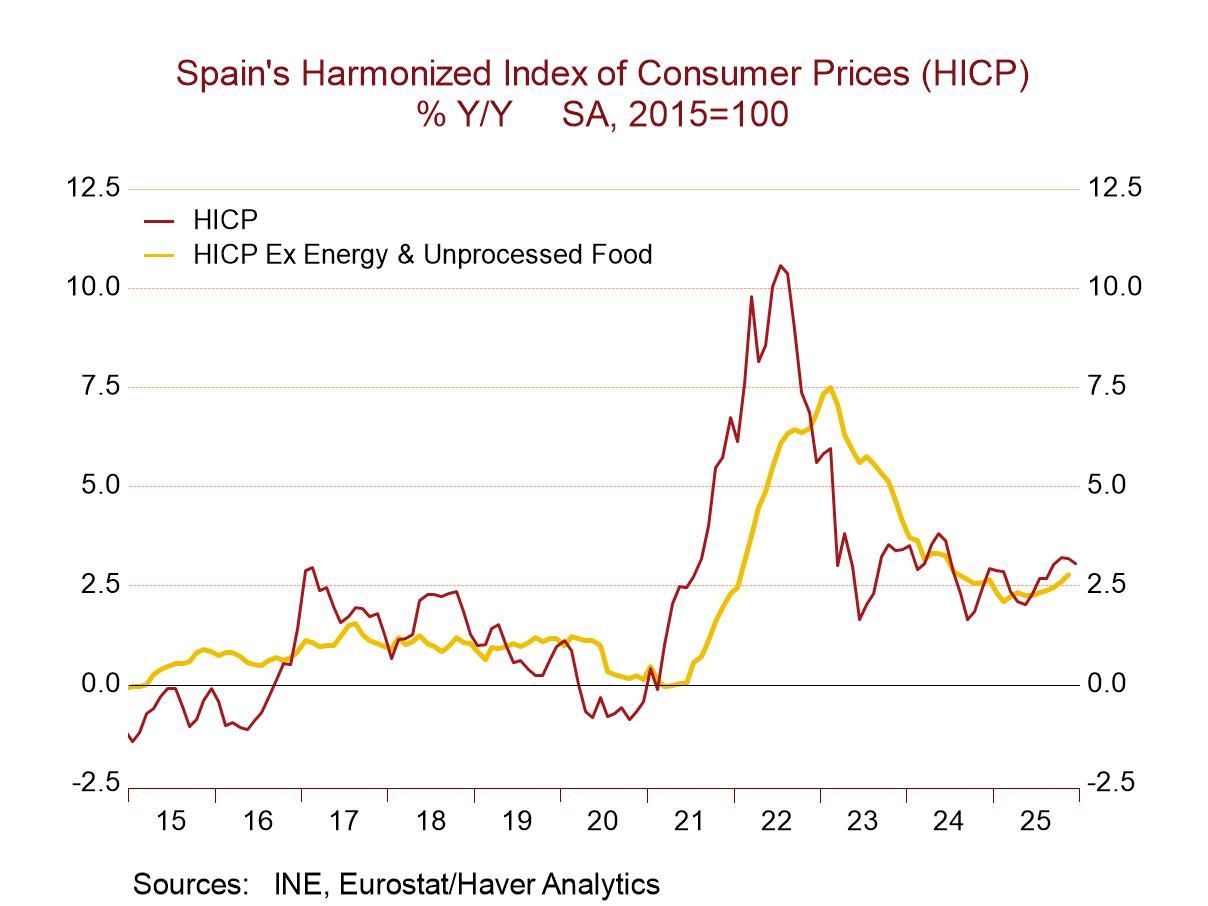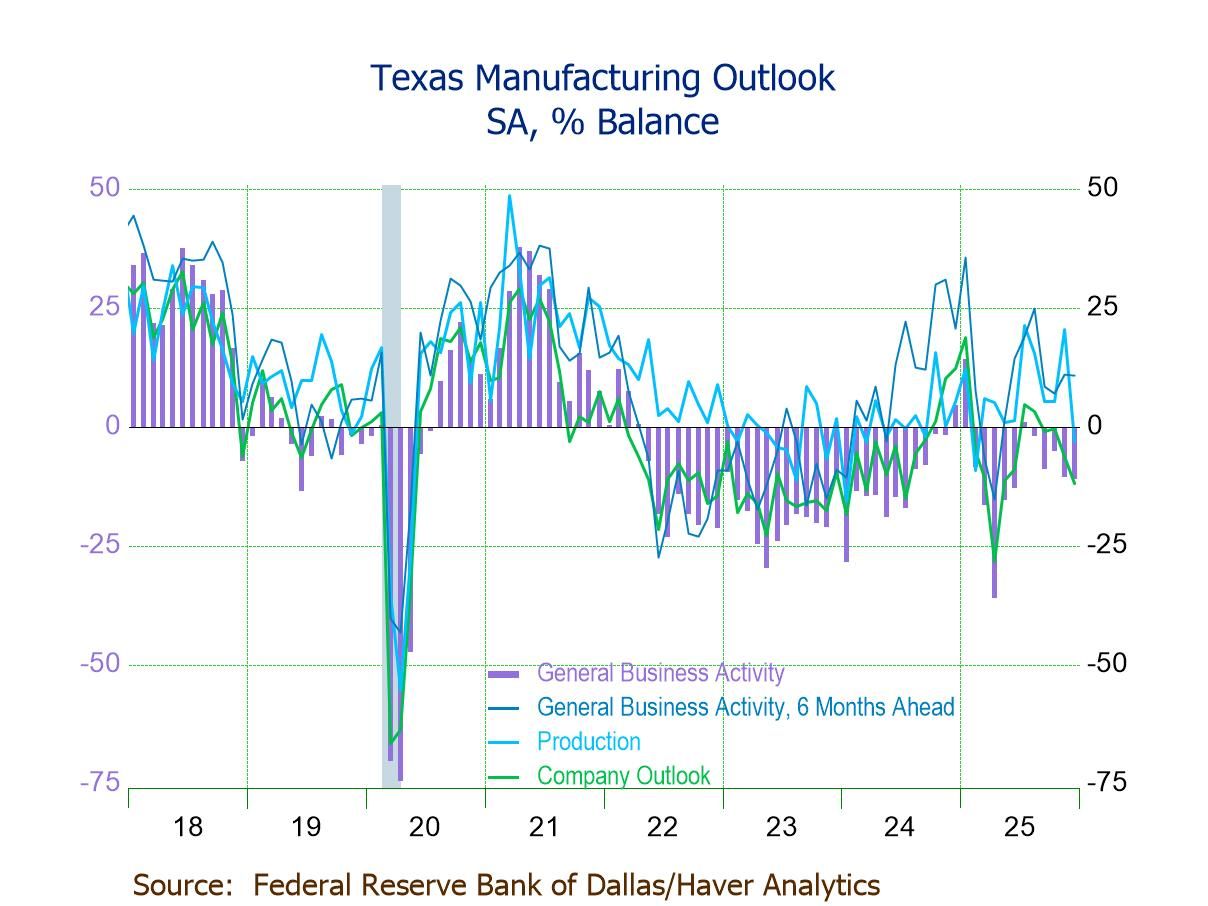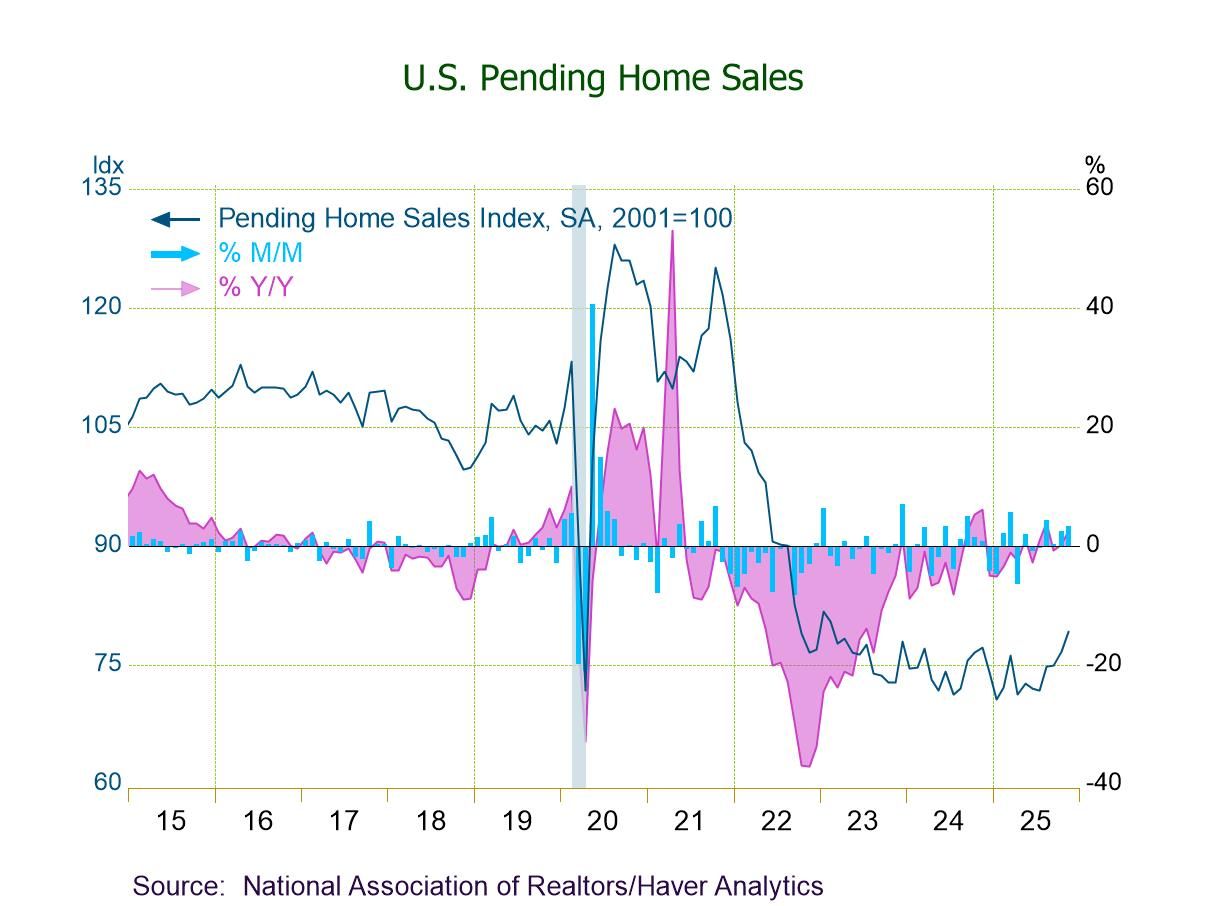U.S. Existing Home Sales Ease During September
by:Tom Moeller
|in:Economy in Brief
Summary
- Sales weaken for sixth month in last seven.
- Declines posted in all regions except the West.
- Median price falls for third straight month.


Sales of existing homes fell 1.0% (-3.5% y/y) in September to 3.84 million units (SAAR) after declining 2.0% in August to 3.88 million, revised from 3.86 million. This was the lowest level of sales since October 2010 despite the decline in 30-year mortgage interest rates last month to an average 6.18% versus the peak 7.06% averaged in May. It has since risen to 6.44% last week. The Action Economics Forecast Survey expected September sales of 3.85 million units. The sales figures are based on closings of sales signed over the past couple of months.
The median price of all existing homes (NSA) fell 2.3% in September (3.0% y/y) to $404,500 after declining 1.7% in August to $414,200, revised from $416,700. It was the third consecutive monthly decline after having risen to a record $426,900 in June. Prices remained almost twice their level of $209,100 ten years earlier. The median price of an existing single-family home fell 2.6% (+2.9% y/y) to $409,000 in September after two months of decline. The median price for condos and co-ops were off 0.8% (+2.2% y/y) to $361,600, also after two months of decline.
By region, sales of existing homes in the Northeast declined 4.2% (-6.1% y/y) to 460,000 in September following a 2.0% August fall. Sales in the Midwest were off 2.2% last month (-5.3% y/y) to 900,000 after holding steady in August. Sales in the South declined 1.7% in September (-5.5% y/y) to 1.72 million following a 2.8% August drop. To the upside, existing home sales in the West rose 4.1% (5.6% y/y) to 760,000 after declining 2.7% in August.
The number of existing homes for sale (NSA) rose 1.5% (23.0% y/y) to 1.39 million last month after rising 2.2% in August. The supply of homes on the market at the current selling rate (NSA) inched up to 4.3 months in September from 4.2 months in August. This figure has generally risen since February. The record low in supply of 1.6 months was reached in January 2022. These figures date back to January 1999.
The data on existing home sales, prices and affordability are compiled by the National Association of Realtors. The data on single-family home sales extend back to February 1968. Total sales and price data and regional sales can be found in Haver's USECON database. Regional price and affordability data and national inventory data are available in the REALTOR database. Mortgage interest rates can be found in the WEEKLY database. The expectations figure is from the Action Economics Forecast Survey, reported in the AS1REPNA database.


Tom Moeller
AuthorMore in Author Profile »Prior to joining Haver Analytics in 2000, Mr. Moeller worked as the Economist at Chancellor Capital Management from 1985 to 1999. There, he developed comprehensive economic forecasts and interpreted economic data for equity and fixed income portfolio managers. Also at Chancellor, Mr. Moeller worked as an equity analyst and was responsible for researching and rating companies in the economically sensitive automobile and housing industries for investment in Chancellor’s equity portfolio. Prior to joining Chancellor, Mr. Moeller was an Economist at Citibank from 1979 to 1984. He also analyzed pricing behavior in the metals industry for the Council on Wage and Price Stability in Washington, D.C. In 1999, Mr. Moeller received the award for most accurate forecast from the Forecasters' Club of New York. From 1990 to 1992 he was President of the New York Association for Business Economists. Mr. Moeller earned an M.B.A. in Finance from Fordham University, where he graduated in 1987. He holds a Bachelor of Arts in Economics from George Washington University.






